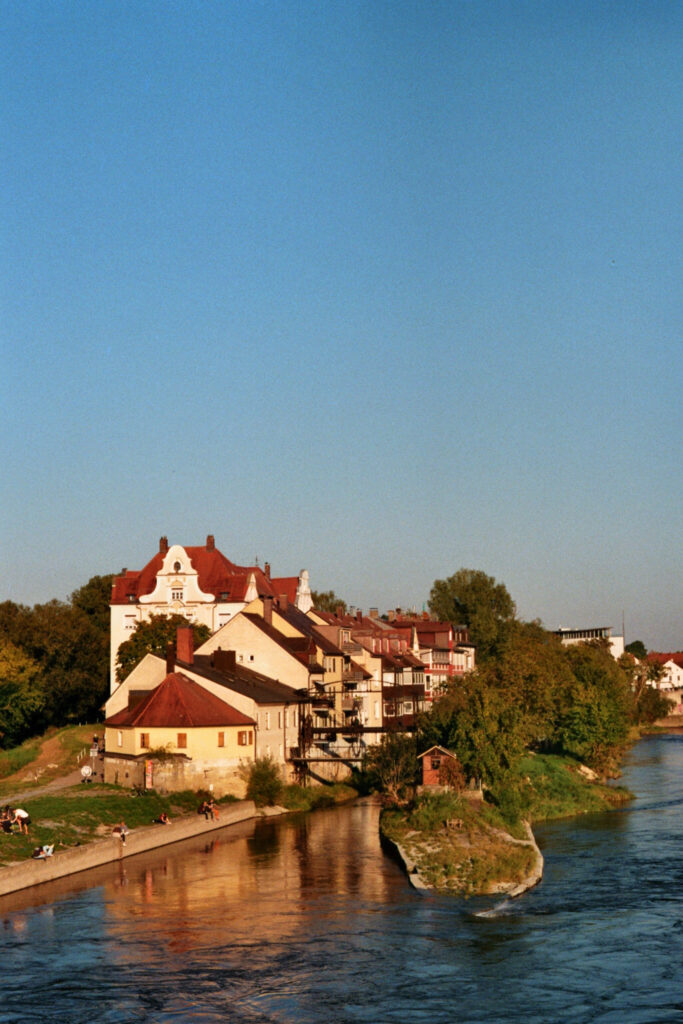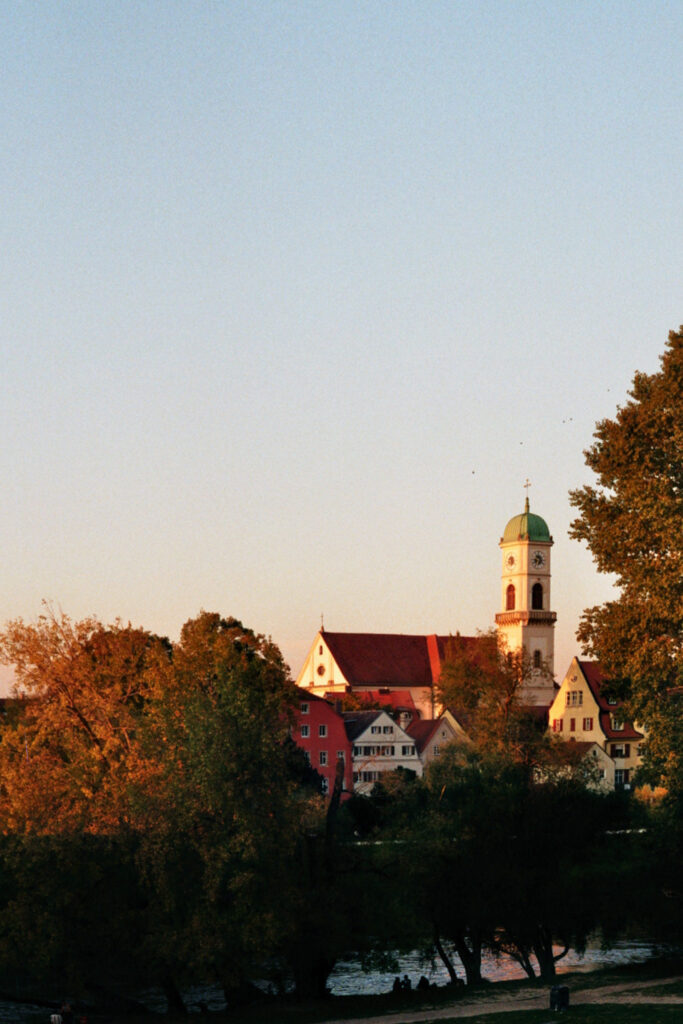all images shown here were taken analog with my canon ae I
after my stop in porto, something truly special was on the agenda: a quick detour home. but not to rest – instead, to discover my adopted hometown from a completely new perspective. it’s shocking how little you actually know about your own city, even after living there for over five years. it was time to change that. unfortunately, the first two days didn’t go as planned. i spent them sick in bed.

imagine a city that feels like a living history book, its pages filled with medieval alleys, historic buildings, and a hint of mediterranean flair. welcome to regensburg, a jewel on the danube. here, history is tangible. the old town is a labyrinth of cobblestone streets, charming squares, and colorful facades that tell tales of emperors, merchants, and artists.

the highlight? without a doubt, the “steinerne brücke” (stone bridge), a masterpiece of medieval engineering that leads you straight to the heart of the city while offering the best views of the danube.

built between 1135 and 1146, the stone bridge was considered a technical marvel of its time. for over 800 years, it remained the only permanent bridge across the danube and played a vital role in european trade and transportation. its 16 limestone arches have withstood centuries of wind, weather, and floods – a true symbol of resilience that still inspires awe today.


crossing the bridge is immediately rewarding: the view of regensburg’s old town from here is simply breathtaking. to the left stands the mighty dom st. peter, and to the right, the historic city skyline unfolds in all its glory.



even from afar, the two nearly 105-meter-tall towers of the cathedral dominate the cityscape, guiding visitors into the old town. construction began in the 13th century, and the cathedral is a prime example of high gothic architecture: intricate details, dramatic proportions, and a mesmerizing interplay of light and shadow. interestingly, the towers were only completed in the 19th century in neo-gothic style, a fascinating chapter in the cathedral’s long and eventful history.
the cathedral’s interior is equally stunning. the colorful stained-glass windows from the 13th to 16th centuries are a highlight, casting shimmering patterns of light across the nave when the sun shines. the exquisitely crafted high choir, with its main altar and gothic crucifixion group, commands attention. in the cathedral treasury, you’ll find remarkable liturgical treasures, relics, and vestments – a captivating glimpse into regensburg’s ecclesiastical tradition.

according to legend, the stone bridge and regensburg cathedral were under construction at the same time. the two master builders were rivals, competing to see who could finish their project first. desperate to complete the bridge quickly, the bridge builder struck a deal with the devil, promising the first three souls to cross the completed bridge in exchange for supernatural help.
thanks to this unholy bargain, the stone bridge was indeed finished first. but the clever bridge builder tricked the devil by sending a dog, a cat, and a rooster across the bridge instead of humans. enraged at the deception, the devil is said to have leapt into the danube, creating the rapids still visible beneath the bridge today.
at the highest point of the bridge, you’ll find a small stone statue known as the bruckmandl. according to legend, it represents the bridge builder gazing toward the cathedral – either proudly admiring his work or melancholically reflecting on the cunning trick he had to use to win. historically, the bruckmandl was added in the 16th century and likely has symbolic significance, but the legend has made it an inseparable part of the bridge’s story.
to be continued…
